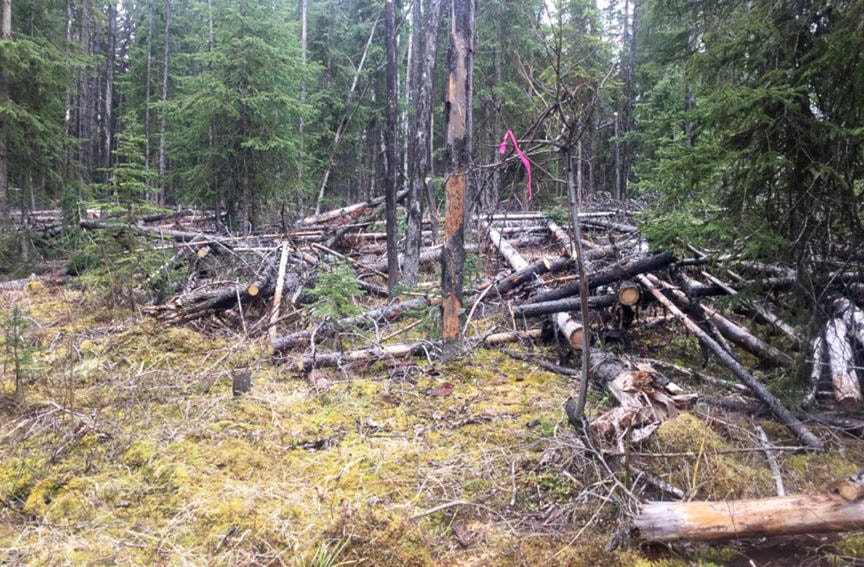The main subject on everyone’s mind at the recent Chinook Community Forest meeting was fuel mitigation.
The 15 attendees at the public consultation session on Feb. 9, held at the Grassy Plains Hall, agreed that they “want to see the forest cleaned up,” Ken Nielsen, manager of the Chinook Community Forest told Lakes District News.
“They would like Chinook Comfor to clean up all the dead pine beetle fibre out there.”
Concerns over the wildfire risk posed by excessive amounts of fuel on the ground are very familiar to those who follow forestry issues. Chinook Community Forest president Miles Fuller gave an intriguing presentation on the subject in January to the Burns Lake Village Council.
READ MORE: Too much fuel causing catastrophic wildfires, expert says
Some of the residents at the Grassy Plains meeting also discussed wildlife corridors and hope that after the dead pine is cleaned up that green corridors can be left behind.
Particular worry was expressed by attendees over Uncha Mountain Red Hills Provincial Park.
“Uncha Mountain is a very high threat area,” Nielsen said. “There’s so much dead fibre up there and half of it’s a park.”
An evacuation alert during last summer’s wildfires covered some areas around Uncha Lake.
LOOK BACK: Some evacuated residents south of Burns Lake allowed to return home
Meeting participants also said they wanted old growth management areas (OGMAs) and visual quality objective (VQO) areas to be managed more.
The problem is that logging is restricted in parks, OGMAs and VQO areas.
“Chinook needs to gain public support to pressure the local [Forests, Lands, Natural Resource Operations and Rural Development] ministry office to find a way to operate in these restricted areas to clean up the dead forest for public safety. Without community support they wouldn’t let us operate in that area,” Nielsen explained.
As it’s still early days, no plans of action in terms of fuel mitigation were decided upon at the Grassy Plains consultation but three meetings were scheduled in the area for March.
“Once those are done by the end of March we’ll collect all that data and see what support we have and make plans for fire mitigation logging activities,” Nielsen said. “Ideally cleaning up the extreme fire risk areas. And we’ll try to identify where people might want a fireguard for the future.”
Blair McBride
Multimedia reporter
Send Blair an email
Like Lakes District News on Facebook
